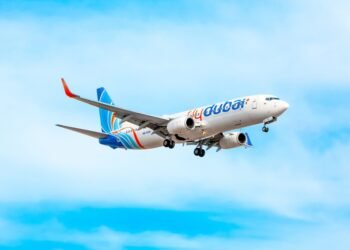
Flydubai’s Boeing 737 MAX 9 fleet unaffected by FAA Directive
- Flydubai’s 3 Boeing 737 MAX 9s unaffected by FAA directive after safety checks.
- The airline expanded by ordering thirty Boeing 787-9s at the Dubai Airshow.
- Flydubai has completed standard C-checks on its fleet over the past 24 months.
After the US aviation regulator issued an emergency airworthiness directive on Sunday, low-cost carrier Flydubai in the United Arab Emirates (UAE) reported that its Boeing 737 MAX 9 aircraft were unaffected.
A new aircraft operated by Alaska Airlines had to make an emergency landing due to an explosion in the cabin, so the FAA temporarily grounded 171 Boeing 737 MAX 9 jetliners on Saturday in order to conduct safety checks. The aircraft operated for a period of eight weeks.
The airline based in Dubai stated that it is using 737 MAX 9 aircraft, which the FAA directive did not mention.
“Following The Emergency Airworthiness Directive (EAD) issued by the Federal Aviation Administration (FAA) on January 6, 2024, we can confirm that the three Boeing 737 MAX 9 aircraft in our fleet are not affected. Flydubai operates Boeing 737 MAX 9 aircraft with a deactivated mid-aft exit door configuration, which is not referenced in the directive,” a Flydubai spokesperson said in a statement to Khaleej Times on Sunday.
After an international operator found a bolt with a missing nut while doing standard maintenance on a mechanism in the rudder-control linkage, US planemaker Boeing requested on December 28 that airlines examine MAX 737 aircraft for a potential loose bolt in the rudder control system. Boeing found another undeliverable aircraft with an improperly tightened nut.
Flydubai is the operator of 29 Boeing 737-800s, three of which are MAX 9. Its fleet grew by thirteen Boeing 737 MAX aircraft last year.
At the Dubai Airshow, the Dubai-based airline placed its first wide-body order for thirty Boeing 787-9s, adding to the variety of its existing fleet of all Boeing 737 aircraft.
The Dubai airline had earlier reported that, during the previous 24 months, the aircraft had undergone C-checks.
In the aircraft industry, C-checks are a component of “heavy maintenance,” which typically takes place every 18 months to 2 years. Typically, this inspection takes up to two weeks and is conducted at a specific institution.






